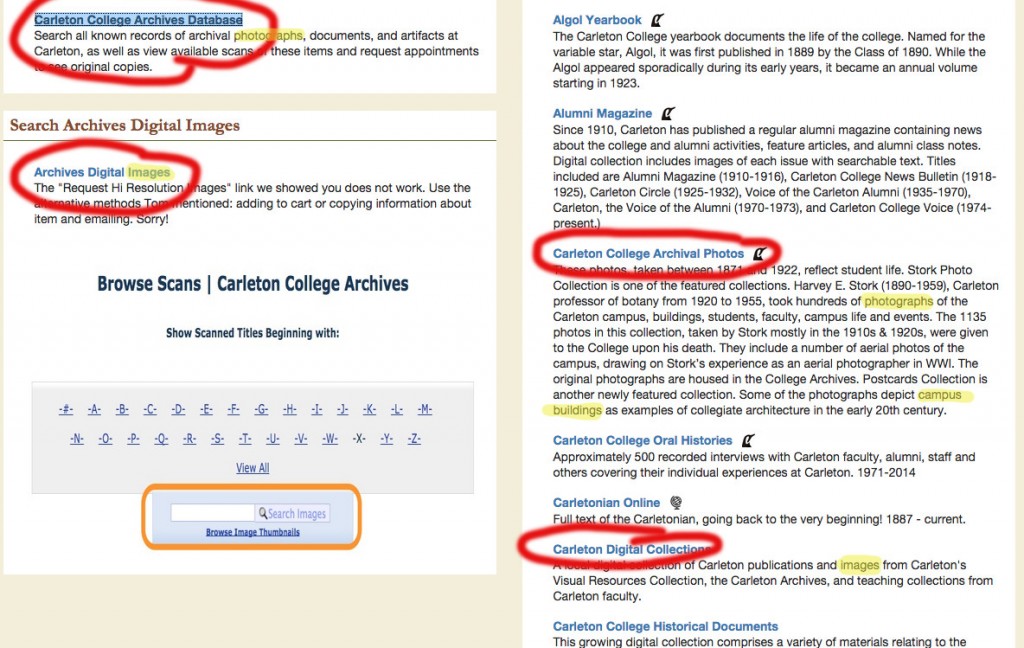I chose to model West Gym using the Carleton College Archives. The archive website can be a little bit confusing at first.
For instance, on the opening page (shown above), there are a few different links that seem to reference the same material, the “Carleton College Archival Photos”, the “Archives Digital Images”, and the “Carleton Digital Collections”, all which reference ‘images’ contained in the databases.
However, they link to very different material and databases. I was unable to find anything about West Gym using the search function accessed through Carleton College Archival Photos link, but quickly found a few resources through the Archives Digital Images.
The difference between the two appears to be:
- the digital selection references those that have been made digital but not necessary categorized by location or photographer
- digital search selection shows access to manuscripts, digital images, and unprocessed materals
- archival photos contain much more information about location and the photographer, appears to be fully processed.
- archival selection contains only photo collections
I also had trouble accessing the rights for usage. On some parts of the archive, it was clearly stated, but the digital collections area did not seem to have it explicitly stated anywhere.
Collecting data this way has a few advantages, and some disadvantages.
- Pros:
- allows direct user interaction with data
- allows user to easily map where they found materials
- previous archival work allows much easier access than non-digital collections
- can be accessed from anywhere with an internet connection
- Cons:
- relies on previous archival work that may not be thorough
- chance for human error high
- time-consuming
One of the things I found that I want to look into more is something I found on the unprocessed materials selection, which shows that a possible blueprint of the West Gym may actually exist in the archives (but perhaps not in the time period I need), but has not yet been digitized. This is something I’ll have to go look in the actual archives for, and perhaps digitize them myself!
Overall, this is a pretty interesting way to collect data. I do wonder what determines what should be in the data collections, and the importance to the archives workers and curators. Why do they choose the materials they do? Is it a mass effort to simply digitize existing collections for the modern age, or do they have a specific plan for future collections? I find myself pretty grateful to the archival staff for the work they’ve already done, and the photographers involved in the project who thought it might be important to track the building process.

Blossom,
Your experiences with the archives ring very true from my own. In answer to your questions regarding the different digital archive resources and the different items available through them, my sense is that this is a legacy of slowly digitizing a collection over the course of years as institutional repositories change and new resources become available. Different initiatives have been launched at different times with varying results, and the situation now is somewhat confused and confusing! There are discussions underway to rationalize the archives with a more strategic plan going forward and I’ll be interested to see what they turn up.